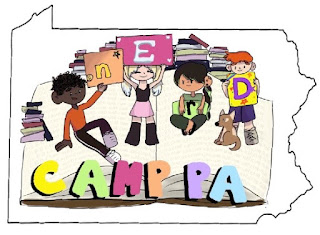As part of the children's books community, you've probably heard the terms "leveling" and "leveled books," and wondered -- what the heck is that? Fiction and nonfiction are familiar, but leveling, not so much.
"Leveling" means writing (or rewriting) a text to meet a child's ability to read, or reading level. The reading level of a text depends on a variety of factors, including but not limited to vocabulary and sentence length and complexity.
Vocabulary
There are a number of resources that are used to determine the reading level of a text – or, conversely, to make sure that a text can be read by students. One of these resources is the word list. These lists group words by grade level. Checking the list will let you determine if a word is likely to be understood by your readers.
The list most often used, in my experience, is the EDL Reading Core Vocabulary. Compiled by Stanford E. Taylor, this list was originally published in 1979 and updated (with a new copyright) in 1989. It includes hundreds of words – but because of its age, some classifications may be questionable; for example, it classes “computer” as a grade 8 word. And don’t even look for iPhone. In general, though, it’s handy.
Another alternative is the Children’s Writer’s Word Book by Alijandra Mogilner. This excellent resource is available in several editions.
Would you use the word "disdainful" in a story for kindergarteners? Generally speaking, no. Some words involve concepts that are too complex for the potential reader.
In other cases, though, the concept is accessible. Take "happy" as an example. The concept of happiness is something that we understand from a very early age (even if we don't have the words for it). Think about . . .
- happy -- grade 1
- merry -- grade 2
- elated -- grade 8
- ecstactic -- grade 9
- delighted -- grade 3
- thrilled -- grade 4
To me, these words illustrate different points on the spectrum of happiness, as well as reading ability.
Sentence Length and Complexity
Short sentences are simple. They are easy to read. They have a subject-verb-object structure.
Longer sentences, especially those that contain additional phrases and clauses, demand more of a reader. They carry more information and, as a result, require more mental effort to read and comprehend.
Even more challenging, though, are compound-complex sentences, such as:
Although my father first said we did not need a cat, he did go with us to the animal shelter, and chose a little gray fluffball that he named Bruce.
You may find that your natural writing style leans toward longer, more complex sentences -- that it's your natural "voice" to produce sentences like the one about the father and the cat. And that's fine if you're writing YA, and you can even use them in MG. But remember, we're here to write to share our thoughts and ideas; if we make them too hard to access, we'll lose that chance -- and the reader, too.
Okay, So How Do I know?
Some people seem to be born with an understanding of readability. For the rest of us, there are tools!
If you have MS Word, you have a built-in leveling tool at your fingertips. The Editor tool in Word will give you a measurement on the Flesch-Kincaid Scale, which provides results on a grade/month scale. F-K uses the average number of words per sentence and the average number of syllables per word to generate a result. Here's a screenshot of its analysis of the fluffball sentence:
You'll see that the grade level is 10.6: that means grade 10, month 6.
So, what if you had the job of making this sentence more accessible? To lower reading level, look at the factors we discussed above. Then, make the changes.
Here's what might happen:
Down to first grade! I chopped up the long sentence into short ones. I replaced furball with kitten. Notice that I used the word "yet" to start the second sentence, rather than "nevertheless." These words do similar jobs, but "yet" doesn't involve such heavy lifting on the reader's part.
ATOS and Lexile are other readability measures you may be asked to use.
ATOS (Automated Technical Order System) levels are used by the Accelerated Reading program (Renaissance Learning). Lexile is produced by MetaMetrics. Both of these are generally used for longer texts.
How do they differ?
Lexile
Out of curiosity, I picked some children’s books and compared their ATOS and Lexile scores, and here's what I found:
- Little Bear, by Else Holmelund Minarik, ATOS level 2.3, Lexile 370
- The Wind in the Willows, by Kenneth Grahame: ATOS book level 8.2, Lexile 1140
- Sara, Plain and Tall, by Patricia MacLachlan: ATOS book level 3.4, Lexile 660L.
(Despite their very different leveling results, the last two are classified as middle-grade by their respective websites.)
Should I Worry About It?
No. Do not lose sleep over this. Writing a first draft is hard enough!
However, you should be aware of it.
You should keep the level in the back of your mind as you write, just to make sure you haven't swerved off the rails. You can use the tools mentioned to check your work. If you're writing for a client (such as work-for-hire assignment), this will be more important that if you're writing to submit to a traditional publisher.
Links: https://hub.lexile.com
https://www.renaissance.com/products/accelerated-reader/atos-and-text-complexity/
And one more thing . . .
Enjoy the summer! The Grog Blog team is taking some time off, but we'll be back in mid-August. If there are topics that you want us to discuss, please leave them in the comments section!
In the meantime, enjoy!










.JPG)